More Hugelkultur Garden Beds
In an ideal world, all my garden beds would have been prepped last Autumn. But it was cold and wet, and.. it never happened. So at the start of Spring, I've been digging out and clearing some more hugelkultur beds where my corn patches used to be.
This is the paddock hugelkultur bed #2. Most of the soil here was taken out, mixed with a ute load of purchased compost, and put in a raised bed by the house. Filling with wood and then covering with soil followed this photo.
A later photo, showing newly dug and filled paddock hugelkultur beds #2 and #3, and beyond that fenced #1. The bordering with cardboard was intended to catch dirt while working, and is not a good approach long term in my opinion. The grass grows around it and pushes it up. You can also see clearing in preparation for subsequent beds closer to the camera.
Three ute loads of wood from the neighbours "burn piles", ready for digging #4. You can see borage growing in the back right corner of the pile, this is one of the few things that I can identify as having grown from the Koanga herbal ley seeds I scattered last year (and never saw any sign of).
The easy part of #4 dug out, where it overlaps the past year's corn patch. The intention is to make it longer where I have the space. #3 has a plum or quince tree planted beyond the corn patch area, which is why it ends up shorter.
#4 filled in with wood, and with a partial dirt covering. It by this point was dug out to an extended length.
And finally the finished #4 bed. Note that #3 still has an excess of soil from where wood in #4 displaced it, this will be shared between all the beds.
It takes maybe three hours to do this, but most of the work is already done because the soil in the past year's corn patches has been previously dug up. Parts like the extended area have never been dug, and are hard and contain stones making them much more work.
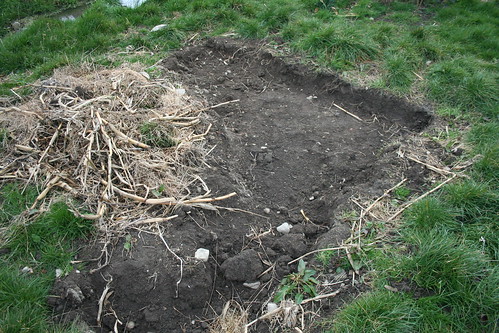

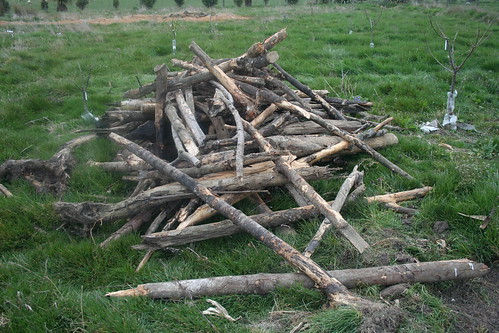
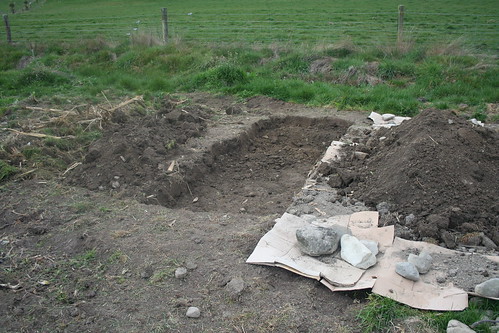
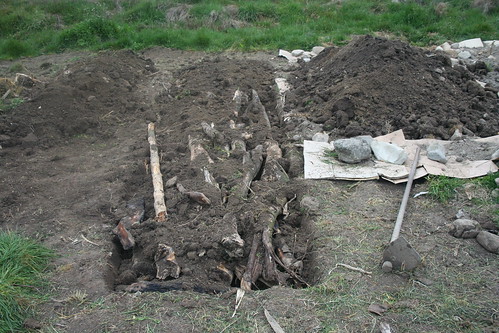
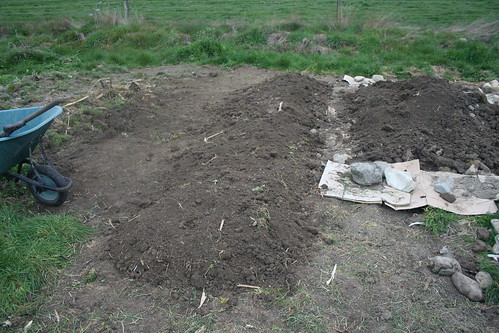
No comments:
Post a Comment